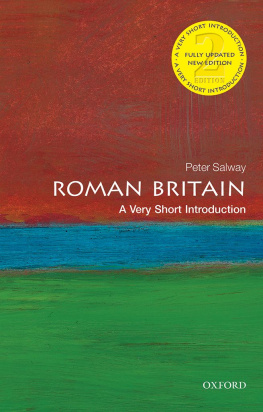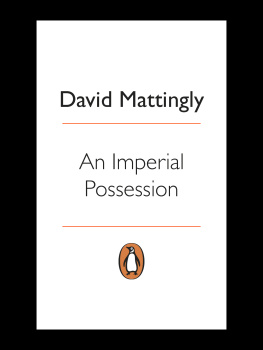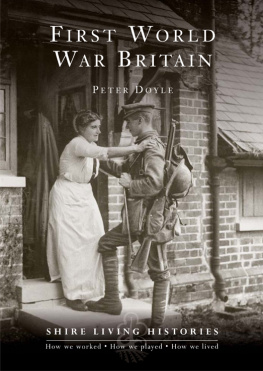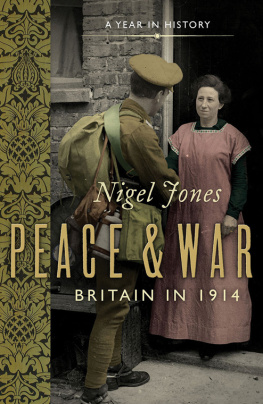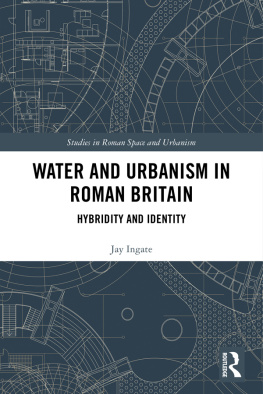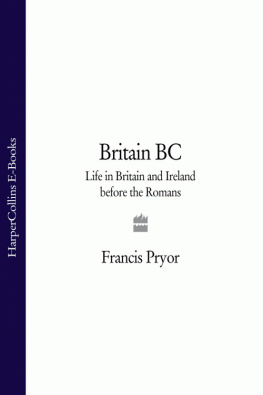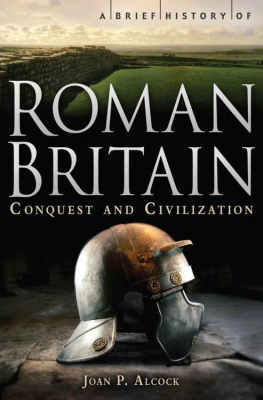F. (Francis) Haverfield - Roman Britain in 1914
Here you can read online F. (Francis) Haverfield - Roman Britain in 1914 full text of the book (entire story) in english for free. Download pdf and epub, get meaning, cover and reviews about this ebook. year: 2012, publisher: Tredition Classics, genre: Detective and thriller. Description of the work, (preface) as well as reviews are available. Best literature library LitArk.com created for fans of good reading and offers a wide selection of genres:
Romance novel
Science fiction
Adventure
Detective
Science
History
Home and family
Prose
Art
Politics
Computer
Non-fiction
Religion
Business
Children
Humor
Choose a favorite category and find really read worthwhile books. Enjoy immersion in the world of imagination, feel the emotions of the characters or learn something new for yourself, make an fascinating discovery.

- Book:Roman Britain in 1914
- Author:
- Publisher:Tredition Classics
- Genre:
- Year:2012
- Rating:4 / 5
- Favourites:Add to favourites
- Your mark:
- 80
- 1
- 2
- 3
- 4
- 5
Roman Britain in 1914: summary, description and annotation
We offer to read an annotation, description, summary or preface (depends on what the author of the book "Roman Britain in 1914" wrote himself). If you haven't found the necessary information about the book — write in the comments, we will try to find it.
Roman Britain in 1914 — read online for free the complete book (whole text) full work
Below is the text of the book, divided by pages. System saving the place of the last page read, allows you to conveniently read the book "Roman Britain in 1914" online for free, without having to search again every time where you left off. Put a bookmark, and you can go to the page where you finished reading at any time.
Font size:
Interval:
Bookmark:

for casting stamps for stamped ware ()
SUPPLEMENTAL PAPERS. III
Published for the British Academy
By Humphrey Milford, Oxford University Press
Amen Corner, E.C.
| Page | |
| List of Illustrations | |
| Preface | |
| A. | Retrospect of Finds made in 1914 |
(a) Raedykes, near Stonehaven; Wall of Pius; Traprain Law; Northumberland (Featherwood, Chesterholm, Corbridge); Weardale (co. Durham); Appleby; Ambleside (fort at Borrans); Lancaster; Ribchester; Slack (near Huddersfield); Holt; Cardiff; Richborough. | |
(b) Wroxeter; Lincoln; Gloucester; London; country houses and farms; Lowbury (Berkshire); Beachy Head, Eastbourne; Parc-y-Meirch (North Wales) | |
| B. | Roman Inscriptions found in 1914 |
Balmuildy (Wall of Pius); Traprain Law; Featherwood (altar); Chesterholm (two altars); Corbridge (inscribed tile); Weardale (bronze paterae); Holt (centurial stone and tile); Lincoln; London; rediscovered milestone near Appleby. | |
| C. | Publications relating to Roman Britain in 1914 . |
1. General | |
2. Special sites or districts | |
| Appendix: List of Periodicals having reference to Roman Britain | |
| Index of Places |
| Page |
| 1. Pottery-stamps and stamped pottery from Holt (see ) |
| 2. Plan of Roman Fort at Borrans, Ambleside. From a plan by Mr. R. G. Collingwood |
| 3. Sketch plan of Principia (Praetorium) of Roman Fort at Ribchester. After a plan by Mr. D. Atkinson and Prof. W. B. Anderson |
| 4. Sketch plan of part of the Roman Fort at Slack. From a plan by Messrs. A. Woodward and P. Ross |
| 5. Holt, plan of site |
| 6. Holt, plan of barracks |
| 7. Holt, plan of dwelling-house and bath-house |
| 8. Holt, plan of kilns |
| 9. Holt, reconstruction of the kilns shown in fig. 8 |
| 10, 11. Holt, stamped 'imitation Samian' ware |
(Figs. 1 and 5-11 are from photographs or drawings lent by Mr. A. Acton, of Wrexham) |
| 12. Sketch plan of Roman bath-house at East Grimstead, after a plan by Mr. Heywood Sumner |
| 13. Sketch plan of Romano-British house at North Ash, after a plan prepared by the Dartford Antiquarian Society |
| 14. Plan of Romano-British house at Clanville. After a plan by the Rev. G. Engleheart, in Archaeologia |
| 15. Fragment of inscription found at Balmuildy |
| 16. Altar found at Chesterholm, drawn from a photograph |
| 17-19. Graves and grave-nails, Infirmary Field, Chester. From drawings and photographs by Prof. Newstead |
| 20-22. The Mersea grave-mound. From the Report of the Morant Club and Essex Archaeological Society |
| 23, 24. Margidunum, plan and seal-box. From the Antiquary |
| 25-28. Plan, section and views of the podium of the temple at Wroxeter. From the Report by Mr. Bushe-Fox |
| 29. General plan of the Roman fort and precincts at Gellygaer. After plans by Mr. J. Ward |
| 30. Postholes at Gellygaer |
Font size:
Interval:
Bookmark:
Similar books «Roman Britain in 1914»
Look at similar books to Roman Britain in 1914. We have selected literature similar in name and meaning in the hope of providing readers with more options to find new, interesting, not yet read works.
Discussion, reviews of the book Roman Britain in 1914 and just readers' own opinions. Leave your comments, write what you think about the work, its meaning or the main characters. Specify what exactly you liked and what you didn't like, and why you think so.

